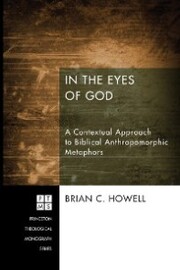-
Zusatztext
-
Throughout the Bible, divine interaction with humanity is portrayed in almost embarrassingly human terms. He sees, hears, thinks, feels, runs, rides chariots, laughs, wields weapons, gives birth, and even repents. Many of these expressions, taken at face value, seem to run afoul of much classical theology, including divine simplicity, transcendence, omniscience, omnipotence, omnipresence, and especially immutability.Traditionally, these texts have been seen as "accommodations" to human intellectual and moral limitations. That is, they were deemed as giving God a more approachable feel, but not as representing any "real" part of his character, being, or interaction with humanity. For example, references to God seeing or hearing are not deemed to represent real acts, as God already knows everything.However, this view is largely based on an Aristotelian conception of metaphors as rhetorical devices, not vehicles that carry any truth content. Since the 1970s, the understanding of how metaphors convey meaning has taken great strides. These advances can help unlock how divine action--often inadvertently flattened under theological presuppositions--functions within a text. This book aims to explore the biblical metaphor of divine sight and how current understandings of metaphorical function can enrich our reading of the text and its theology.
-
-
Kurztext
-
Throughout the Bible, divine interaction with humanity is portrayed in almost embarrassingly human terms. He sees, hears, thinks, feels, runs, rides chariots, laughs, wields weapons, gives birth, and even repents. Many of these expressions, taken at face value, seem to run afoul of much classical theology, including divine simplicity, transcendence, omniscience, omnipotence, omnipresence, and especially immutability. Traditionally, these texts have been seen as "e;accommodations"e; to human intellectual and moral limitations. That is, they were deemed as giving God a more approachable feel, but not as representing any "e;real"e; part of his character, being, or interaction with humanity. For example, references to God seeing or hearing are not deemed to represent real acts, as God already knows everything. However, this view is largely based on an Aristotelian conception of metaphors as rhetorical devices, not vehicles that carry any truth content. Since the 1970s, the understanding of how metaphors convey meaning has taken great strides. These advances can help unlock how divine action--often inadvertently flattened under theological presuppositions--functions within a text. This book aims to explore the biblical metaphor of divine sight and how current understandings of metaphorical function can enrich our reading of the text and its theology.
-
-
Autorenportrait
- Brian C. Howell is a lecturer for the West of England Ministerial Training Course, and a freelance writer, lecturer, speaker, saxophonist, and music teacher.
Detailansicht
In the Eyes of God
eBook - A Contextual Approach to Biblical Anthropomorphic Metaphors, Princeton Theological Monograph Series
ISBN/EAN: 9781630870508
Umbreit-Nr.: 2288862
Sprache:
Englisch
Umfang: 308 S.
Format in cm:
Einband:
Keine Angabe
Erschienen am 24.09.2013
Auflage: 1/2013
E-Book
Format: EPUB
DRM: Adobe DRM


